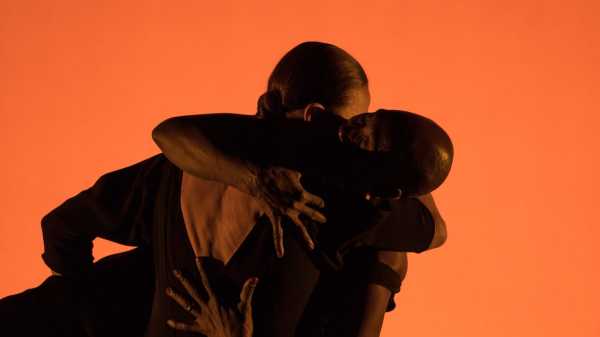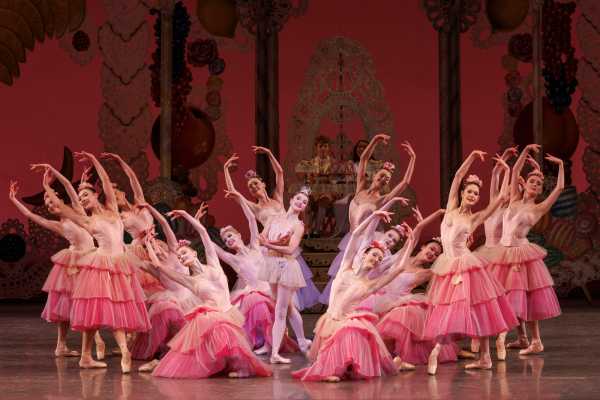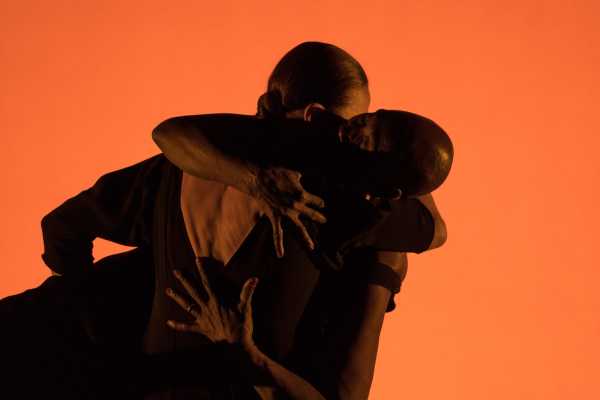
Save this storySave this storySave this storySave this story
Marina Harss
Culture writer
You’re reading the Goings On newsletter, a guide to what we’re watching, listening to, and doing this week. Sign up to receive it in your in-box.
It’s that time of year again, when sugarplums and dancing snowflakes—and Tchaikovsky’s iconic score—are as ubiquitous as harried parents at the mall. But what may feel unbearable blasted over the supermarket loudspeakers has yet to lose its charm in the theatre, especially when performed by a mix of professional dancers and well-trained—and eager—kids. Since 1954, when New York City Ballet first presented “George Balanchine’s The Nutcracker”—inspired by the version that Balanchine danced as a ballet student in pre-Revolutionary St. Petersburg—his has been the one to which all others are compared. (It plays at the David H. Koch Theatre, through Dec. 31.) The show’s felicities include a transformation, in the blink of an eye, from Nutcracker to prince, a witty and refined solo for the Sugar Plum Fairy, and windswept choreography for Dewdrop in the “Waltz of the Flowers.”

“George Balanchine’s The Nutcracker.”Photograph by Erin Baiano
But New York City is big enough for more than one “Nutcracker.” “The Yorkville Nutcracker” (Kaye Playhouse, Dec. 14-17), by the avuncular dance teacher and choreographer Francis Patrelle, offers a homey rendition—set in New York in the late eighteen-hundreds, at the turn of the century—performed by kids from ballet schools around town. In the roles of Sugar Plum and her partner are two dancers from City Ballet, the lithe Miriam Miller and the stalwart Tyler Angle. The many diverse cultures of New York are reflected in the lineup of “The Brooklyn Nutcracker” (Kings Theatre, Dec. 16), where the Rat King is portrayed by the krump virtuoso Brian (HallowDreamz) Henry, and a group of Ukrainian dancers performs a version of the traditional Ukrainian hopak. Sugar Plum and her beau are played by Ingrid Silva, of Dance Theatre of Harlem, and Dylan Santos.
As a wry alternative to all this sugar and spice, one could do worse than the Bang Group’s “Nut/Cracked” (92nd Street Y, Dec. 16-17), a joke-filled revue in which dancers, mostly adults, tap in point shoes or skate across the stage in bare feet—and sometimes fall—to Tchaikovsky recordings by the likes of Duke Ellington, Glenn Miller, and the Westminster Concert Bell Choir. Alvin Ailey American Dance Theatre doesn’t do a “Nutcracker,” but attending its winter run at City Center (Nov. 29-Dec. 31) is also a ritual of the season. This is particularly true on a night when the company is performing Ailey’s “Revelations,” from 1960, in which the choreographer harnessed the power of African American spirituals to draw a compelling through line from loss and struggle to joy.
Spotlight

Photograph by Maarten Vanden Abeele / © Pina Bausch Foundation / Courtesy Park Avenue ArmoryDance
The anarchic energy and haunting melodies of Stravinsky’s “The Rite of Spring” have fascinated generations of dancers and choreographers since the ballet’s première, for Sergei Diaghilev’s Ballets Russes, in 1913. That first version, by Vaslav Nijinsky, caused a riot. Decades later, in 1975, Pina Bausch took on the score, creating a work in which men and women tear at one another in a combination of terror and attraction, dancing on a floor of dirt that gradually sticks to their bodies. The climax is a punishing sacrificial dance by a woman in a red dress. In the vast space of the Park Avenue Armory, Bausch’s “The Rite of Spring” (Nov. 29-Dec. 14) is performed by a company of dancers from across Africa, who rehearsed the work at École des Sables, in Senegal. It is paired with “common ground[s],” a duet for the École’s co-founder Germaine Acogny—a towering figure in African dance—and Malou Airaudo, one of Bausch’s early collaborators.—Marina Harss

About Town
Podcast
In “Alaska Is the Center of the Universe,” a new six-part series on Audible, the Anchorage-based drummer, voice-over actor, and Inupiat storyteller James Dommek, Jr., journeys across his home state to gather traditional tales from fellow Alaska Natives. He visits Utqiagvik, the northernmost city in the U.S., to hear about a murderous cryptid; Juneau, for a story about a clever, shape-shifting otter; Athabascan territory, to learn about a girl who turned into a salmon. “There’s not always going to be a hero’s journey—most traditional Native stories are much weirder than that,” Dommek says. They are—and they’re also a means for cultures to connect. Dommek, eager to engage with the ancient and the modern at once, makes for an appealing bridge between worlds. “In order to get this story, I had to give Nick dried seal meat and unhack his Facebook,” he says in one episode. “That’s like two cultural trains colliding at full speed.”—Sarah Larson
Art
If you ask someone who doesn’t enjoy going to museums to imagine an abstract work of art, he might come up with something along the lines of the paintings in “Robert Ryman: 1961-1964.” They demand a lot. Thick, scabby strokes of white cover bright fields of color or patches of brown canvas. Viewers, in return for their attention, get a double scoop of frosty beauty, plus some hard questions: Is abstraction the purest kind of art or the earthiest? Is it meant for all humankind or for only a sliver of us? To which Ryman’s paintings reply with a charismatic “yep.”—Jackson Arn (Zwirner; through Feb. 3.)
Folk

Photograph by Dana Trippe
In 2021, after many stints with various bands, the Canadian singer-songwriter and roots-music specialist Allison Russell released her début solo album, “Outside Child,” a poignant collection of confessional songs that build on the advocacy of her previous music, including her work with the supergroup Our Native Daughters. In the two years since that release, Russell has become a guiding light in Americana, her soulful folk nearly as powerful as her efforts to embolden Black women in an artistic scene that they pioneered but have since been pushed out of. Russell’s follow-up, “The Returner,” from September, demonstrates her multidimensional artistry at its full force, with tunes that split the difference between pop and hymn.—Sheldon Pearce (Music Hall of Williamsburg; Nov. 30.)
Podcast
Hart Island, the public cemetery and potter’s field in the Bronx, has been a place of enduring mystery. Since 1869, more than a million people, many unknown, have been buried there. The eight episodes of “The Unmarked Graveyard: Stories from Hart Island”—part of Joe Richman’s “Radio Diaries,” a venerable and remarkable audio-documentary project that gives people recorders and helps them document their experiences—tell the stories of seven people who are buried on Hart Island, narrated by their loved ones. Some of the dead are long-lost relatives; one was a beloved resident of a Manhattan hotel, another was a composer, another a famous writer. Sensitively edited and beautifully sound-designed, the series imbues its subjects and its setting with a quiet, respectful poetry: in the words of the composer’s widower, it was “the simplicity, the anonymity, the humility” of Hart Island that appealed to his egalitarian husband. “And it was on the water, which he loved.”—Sarah Larson
Broadway

Photograph by Matthew Murphy & Evan Zimmerman
The silly revival of “Spamalot,” a musicalization—by Eric Idle and his co-composer John Du Prez—of the 1975 movie “Monty Python and the Holy Grail,” has aged like a suit of armor: you can still wear the 2004 show into battle (its gags scratch some theatregoers’ Python itch), but it does sometimes creak. Josh Rhodes directs expert Broadway goofballs, such as Christopher Fitzgerald, James Monroe Iglehart, and Michael Urie, capably on their quest, but it’s surprising that the musical’s second-act bagginess hasn’t been meaningfully adjusted, nor has the number about “the Jews” and Broadway success. Happily, Leslie Rodriguez Kritzer cannonballs into her part as the Lady of the Lake, accelerated by her comic mania and a welter of seemingly improvised jokes. Grail, shmail. She’s the prize.—Helen Shaw (St. James; open run.)
Movies
Some infuriating repetitions of history get a fascinating showcase in Nicole Newnham’s documentary “The Disappearance of Shere Hite.” The film is centered on Hite, a graduate student in social history at Columbia University in the late nineteen-sixties and early seventies, who—working with feminist groups that linked the quest for equality with women’s knowledge of their own bodies—prepared a detailed and anonymous questionnaire for women about their sexuality. She received thousands of responses that overturned patriarchal assumptions, including those about masturbation, orgasm, and marital fidelity. The resulting book, “The Hite Report,” was a best-seller—and the backlash, from both the political right and the media, was furious. With an exemplary array of archival footage, new interviews, and selections from Hite’s work, Newnham crafts a complex and absorbing portrait of Hite; the mystery implied in the movie’s title is as astounding as any filmed fiction.—Richard Brody (In theatrical release.)
Classical Music
The Chamber Music Society of Lincoln Center, an organization known for its prim devotion to the classics, gets a little chaotic in the first program of its annual Baroque Festival. The French composer Jean-Féry Rebel’s “Les Élémens” (“The Elements”) opens with “Le Chaos,” which depicts the clash of earth, air, water, and fire by simultaneously sounding all the notes of a D-minor scale—an unheard-of cacophony for music at the time that it was written, in the seventeen-thirties. Eventually, the natural order establishes itself, with chirping woodwinds and fiery violins. The same could be said for the festival itself, which moves on to concerts of Bach’s minutely organized “Art of the Fugue” and to his glorious Brandenburg Concertos.—Oussama Zahr (Alice Tully Hall; select dates Dec. 1-19.)
Dance
Okwui Okpokwasili is an uncommonly powerful performer, physically striking and seemingly able to channel spirits. The enigmatic pieces that she makes with her husband, the designer and director Peter Born, are hard to categorize—nonlinear blends of theatre, dance, song, and installation art, usually about Black women—but their level of intensity is easy to gauge: high. Their latest is “adaku, part 1: the road opens,” the first chapter in a series of works of speculative mythology. It imagines a pre-colonial African village on the brink of change, pulled in different directions, with ghosts in the shadows.—Brian Seibert (BAM Fisher; Nov. 28-Dec. 2.)
Off Broadway
Lameece Issaq’s one-woman play, “A Good Day to Me Not to You,” directed by Lee Sunday Evans, for Waterwell, proceeds from chatty confessionalism to extraordinary pathos, moving so swiftly that we almost don’t notice the transition. Relaxed and wry, Issaq’s character begins by telling us about an S.T.D. flareup (“a blossoming!”) and her refuge, after losing her job, at an eccentric Upper West Side nunnery slash halfway house. The woman’s other wounds, such as a fear of sex, manifest more slowly and more mysteriously. Issaq is playing an out-of-work dental technician, and when she meets a new person, say, a flirtatious nun, she first describes her teeth. The show, brimming with jokes, also goes deep, looking past the smile to find the skull beneath.—Helen Shaw (Connelly Theatre; through Dec. 16.)
P.S. Good stuff on the Internet:
-
What it feels like when you try to help your mom with Thanksgiving dinner
-
Nathan Fielder’s one-handed flourishes
-
Anthony Bourdain’s version of mashed potatoes
Sourse: newyorker.com